tutorial, commentary, study resources, plot, and web links
The Duel – full title The Duel: A Military Story – was first serialized in The Pall Mall Magazine (UK) in early 1908, and later that year in the US as The Point of Honour in the periodical Forum. It was later collected in A Set of Six in 1908 and published by Garden City Publishing in 1924. The other stories in this collection of Joseph Conrad’s tales are are Gaspar Ruiz, An Anarchist, The Informer, The Brute, and Il Conde.
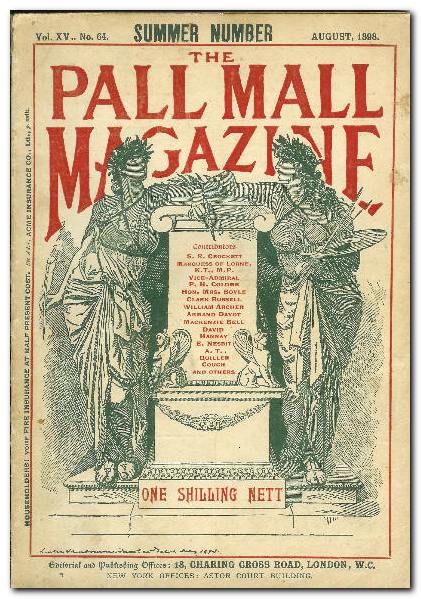
The Duel – critical commentary
Background
This is another of Conrad’s stories with the Napoleonic wars as a background (the others being The Inn of the Two Witches (1913) and The Warrior’s Soul (1915). Perhaps Conrad was looking back on a previous period in history which engulfed a whole continent in wars. The sad fact is that none of these historically-based tales are at all satisfactory from an artistic point of view when compared with his best work.
You can see the points Conrad is making easily enough in this tale. An innocent man is challenged according to a Code of Honour he feels duty bound to accept. His antagonist is vengeful, petty, and jealous. The duel to establish someone’s honour is a complete waste of time. D’Hubert does everything he can to give Ferand satisfaction: he even ends up secretly providing him with a pension – but still the blaggard Ferand continues to nurture what he sees as his legitimate but unfulfilled grievance.
Duelling
The rules of duelling varied (slightly) from one country to another, and they changed over time – from their origins in the chivalric age to their expiry in the nineteenth and twentieth centuries. But no rules of engagement ever recorded permitted hiding behind trees. That would be completely contrary to the whole notion of gentlemanly behaviour and sporting ethics. It’s a puzzle why Conrad should make such a blunder when he is normally so accurate with the technical details of the things he describes.
But then, if ever a tale was spun out way beyond its natural length, it’s The Duel, which later became more ironically titled A Point of Honour. It suffers from all the weaknesses of Conrad’s shorter fictions – repetition, shifting locations, weak structure, and unconvincing historical context. It is just possible that because the tale was serialized in The Pall Mall Magazine that Conrad was tempted into these literary excesses.
The Duel – study resources
![]() The Duel – CreateSpace editions – Amazon UK
The Duel – CreateSpace editions – Amazon UK
![]() The Duel – CreateSpace editions – Amazon US
The Duel – CreateSpace editions – Amazon US
![]() The Complete Works of Joseph Conrad – Kindle eBook
The Complete Works of Joseph Conrad – Kindle eBook
![]() The Duel – eBook versions at Project Gutenberg
The Duel – eBook versions at Project Gutenberg
![]() Joseph Conrad: A Biography – Amazon UK
Joseph Conrad: A Biography – Amazon UK
![]() The Cambridge Companion to Joseph Conrad – Amazon UK
The Cambridge Companion to Joseph Conrad – Amazon UK
![]() Routledge Guide to Joseph Conrad – Amazon UK
Routledge Guide to Joseph Conrad – Amazon UK
![]() Oxford Reader’s Companion to Conrad – Amazon UK
Oxford Reader’s Companion to Conrad – Amazon UK
![]() Notes on Life and Letters – Amazon UK
Notes on Life and Letters – Amazon UK
![]() Joseph Conrad – biographical notes
Joseph Conrad – biographical notes
The Duel – plot summary
Part I. Lieutenant Armand D’Hubert calls at the house where Lieutenant Ferand is billeted in Strasbourg, in search of information on his whereabouts. Ferand has risen early, fought a duel with a civilian and injured him, then gone out to call on a woman who holds a salon. D’Hubert goes to the house and transmits to Ferand the official message that he must return to his quarters and remain under arrest. Ferand is annoyed, and cannot see that he has done anything wrong. D’Hubert explains that his opponent’s civilian friends are well connected and have made complaints. When the two men return to the house Ferand threatens D’Hubert for disturbing his afternoon. Ferand draws his sword and challenges him to a duel on the spot, in the rear garden. D’Hubert realises that Ferand seriously wishes to kill him, and that the duel will get both of them into trouble, but he manages to strike a damaging blow to Ferand, which cuts his arm. D’Hubert then visits the regimental surgeon and sends him to attend Ferand. He is annoyed with Ferand but glad he has not killed him.
D’Hubert is disgraced and reduced to the ranks. Then he is visited by the surgeon who tells him that Ferand, having now recovered, intends to continue the dispute with a further duel. The public assume that there must be a very serious difference between the two soldiers to make them risk their reputations in this way.
Part II. Various theories are advanced in society to try to explain the conflict. The two men arrange another duel, in which D’Hubert is slightly hurt. Their seconds urge a reconciliation, but it does not take place. There is a proposal to appoint a deciding Court of Honour to resolve the dispute, but Ferand prefers to say nothing.
The colonel of D’Hubert’s regiment is concerned, takes a parental interest, and asks for an explanation. D’Hubert refuses to go into details, but assures him it is a matter of honour – both personal, and for the regiment. The colonel imposes a twelve month ban on any further duelling, during which time D’Hubert is promoted. This renders any further challenge impossible under the codes of duelling, because of the differences in rank of the disputants.
Ferand then seeks and gains promotion, which leads to another duel. This leaves them both cut to ribbons. After they recover D’Hubert is promoted again onto the personal staff of a marshall. Ferand cannot stand the idea of having to take orders from him. The next duel takes place on horseback at dawn in Lubeck. D’Hubert inflicts a single damaging blow to Ferand’s forehead and the duel is stopped. Both men stay on in the army, and gradually grow older.
Part III. During the retreat from Moscow in Napoleon’s disastrous campaign, the two men are yoked in misery and defeat, but choose to ignore each other. However, they co-operate in military terms, and even help each other to survive. D’Hubert becomes dressed in a bizarre collection of old clothes collected from the wreckage of the retreat. He wants a peaceful life, and even begins to doubt the wisdom of Napoleon. However, his good conduct is favourably noticed by the ‘Emperor’, and when he is promoted to a general, this inflames Ferand’s rivalry.
D’Hubert is badly wounded, and recuperates at his Royalist sister’s home in the south of France. Then he is despatched to Paris and is introduced to a girl who he plans to marry. Napoleon is on St Helena, and the royalists plan to persecute Ferand. D’Hubert intervenes with the Minister of Police, and has Ferand’s name removed from the list of Bonapartist officers due to be punished (executed).
As a result, Ferand is retired from the army and banished to an obscure town in the middle of France. Instead of being grateful, he is outraged at the indignity, and plans yet another duel with D’Hubert.
Part IV. D’Hubert is in love with Adele, the girl his sister has chosen for him, though she does not seem to reciprocate his feelings. But Ferand’s seconds catch up with him and present the renewed challenge. D’Hubert consults Chevalier de Vallmassigne, Adele’s royalist uncle, who suggests he can refuse the challenge – but D’Hubert feels unable to do so. He sees it as an inevitability he must face.
The duel takes place early next morning with pistols. D’Hubert nonchalantly eats an orange before the contest [a nod to Pushkin’s Eugene Onegin] . Ferand fires twice, but misses D’Hubert who hides behind trees, then spares his rival’s life yet again by conserving his two unspent shots for any time in the future.
He gets back home to find that the Chevalier de Vallmassigne has told Adele what has been going on, and she has. run all the way to D’Hubert’s house in anxiety about his wellbeing. This effectively reveals the true state of her feelings towards D’Hubert, who is overjoyed. They are married, after which D’Hubert writes to Ferand revoking his two-shot advantage, and even names one of his two sons after him, and (secretly) pays a pension to him for his upkeep in retirement. But Ferand remains unreconciled.
Joseph Conrad – video biography
The Duel – principal characters
| Gabriel Florian Ferand | a short, dark soldier |
| Armand D’Hubert | a tall, fair soldier |
| Leonie D’Hubert | his sister |
| Madame de Lionne | a married Parisian woman with a salon |
| Adele de Valmassigne | D’Hubert’s fiancée |
| Le Chevalier de Valmassigne | her uncle, a royalist ex-emigré |
Joseph Conrad’s writing
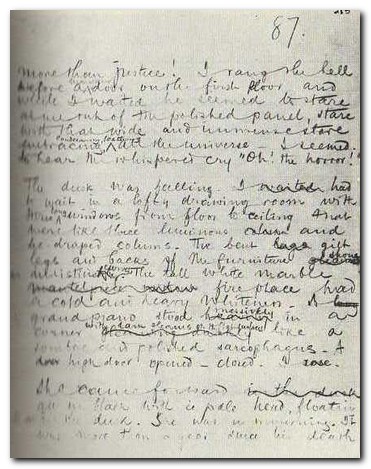
Manuscript page from Heart of Darkness
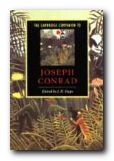 The Cambridge Companion to Joseph Conrad offers a series of essays by leading Conrad scholars aimed at both students and the general reader. There’s a chronology and overview of Conrad’s life, then chapters that explore significant issues in his major writings, and deal in depth with individual works. These are followed by discussions of the special nature of Conrad’s narrative techniques, his complex relationships with late-Victorian imperialism and with literary Modernism, and his influence on other writers and artists. Each essay provides guidance to further reading, and a concluding chapter surveys the body of Conrad criticism.
The Cambridge Companion to Joseph Conrad offers a series of essays by leading Conrad scholars aimed at both students and the general reader. There’s a chronology and overview of Conrad’s life, then chapters that explore significant issues in his major writings, and deal in depth with individual works. These are followed by discussions of the special nature of Conrad’s narrative techniques, his complex relationships with late-Victorian imperialism and with literary Modernism, and his influence on other writers and artists. Each essay provides guidance to further reading, and a concluding chapter surveys the body of Conrad criticism.
![]() Buy the book at Amazon UK
Buy the book at Amazon UK
![]() Buy the book at Amazon US
Buy the book at Amazon US
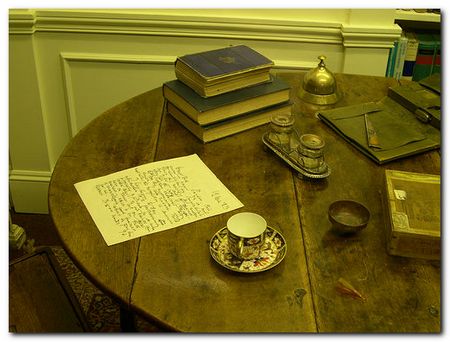
Joseph Conrad’s writing table
Further reading
![]() Amar Acheraiou Joseph Conrad and the Reader, London: Macmillan, 2009.
Amar Acheraiou Joseph Conrad and the Reader, London: Macmillan, 2009.
![]() Jacques Berthoud, Joseph Conrad: The Major Phase, Cambridge: Cambridge University Press, 1978.
Jacques Berthoud, Joseph Conrad: The Major Phase, Cambridge: Cambridge University Press, 1978.
![]() Muriel Bradbrook, Joseph Conrad: Poland’s English Genius, Cambridge: Cambridge University Press, 1941
Muriel Bradbrook, Joseph Conrad: Poland’s English Genius, Cambridge: Cambridge University Press, 1941
![]() Harold Bloom (ed), Joseph Conrad (Bloom’s Modern Critical Views, New York: Chelsea House Publishers, 2010
Harold Bloom (ed), Joseph Conrad (Bloom’s Modern Critical Views, New York: Chelsea House Publishers, 2010
![]() Hillel M. Daleski , Joseph Conrad: The Way of Dispossession, London: Faber, 1977
Hillel M. Daleski , Joseph Conrad: The Way of Dispossession, London: Faber, 1977
![]() Daphna Erdinast-Vulcan, Joseph Conrad and the Modern Temper, Oxford: Oxford University Press, 1991.
Daphna Erdinast-Vulcan, Joseph Conrad and the Modern Temper, Oxford: Oxford University Press, 1991.
![]() Aaron Fogel, Coercion to Speak: Conrad’s Poetics of Dialogue, Cambridge, Mass: Harvard University Press, 1985
Aaron Fogel, Coercion to Speak: Conrad’s Poetics of Dialogue, Cambridge, Mass: Harvard University Press, 1985
![]() John Dozier Gordon, Joseph Conrad: The Making of a Novelist, Cambridge, Mass: Harvard University Press, 1940
John Dozier Gordon, Joseph Conrad: The Making of a Novelist, Cambridge, Mass: Harvard University Press, 1940
![]() Albert J. Guerard, Conrad the Novelist, Cambridge, Mass: Harvard University Press, 1958
Albert J. Guerard, Conrad the Novelist, Cambridge, Mass: Harvard University Press, 1958
![]() Robert Hampson, Joseph Conrad: Betrayal and Identity, Basingstoke: Macmillan, 1992
Robert Hampson, Joseph Conrad: Betrayal and Identity, Basingstoke: Macmillan, 1992
![]() Jeremy Hawthorn, Joseph Conrad: Language and Fictional Self-Consciousness, London: Edward Arnold, 1979
Jeremy Hawthorn, Joseph Conrad: Language and Fictional Self-Consciousness, London: Edward Arnold, 1979
![]() Jeremy Hawthorn, Joseph Conrad: Narrative Technique and Ideological Commitment, London: Edward Arnold, 1990
Jeremy Hawthorn, Joseph Conrad: Narrative Technique and Ideological Commitment, London: Edward Arnold, 1990
![]() Jeremy Hawthorn, Sexuality and the Erotic in the Fiction of Joseph Conrad, London: Continuum, 2007.
Jeremy Hawthorn, Sexuality and the Erotic in the Fiction of Joseph Conrad, London: Continuum, 2007.
![]() Owen Knowles, The Oxford Reader’s Companion to Conrad, Oxford: Oxford University Press, 1990
Owen Knowles, The Oxford Reader’s Companion to Conrad, Oxford: Oxford University Press, 1990
![]() Jakob Lothe, Joseph Conrad: Voice, Sequence, History, Genre, Ohio State University Press, 2008
Jakob Lothe, Joseph Conrad: Voice, Sequence, History, Genre, Ohio State University Press, 2008
![]() Gustav Morf, The Polish Shades and Ghosts of Joseph Conrad, New York: Astra, 1976
Gustav Morf, The Polish Shades and Ghosts of Joseph Conrad, New York: Astra, 1976
![]() Ross Murfin, Conrad Revisited: Essays for the Eighties, Tuscaloosa, Ala: University of Alabama Press, 1985
Ross Murfin, Conrad Revisited: Essays for the Eighties, Tuscaloosa, Ala: University of Alabama Press, 1985
![]() Jeffery Myers, Joseph Conrad: A Biography, Cooper Square Publishers, 2001.
Jeffery Myers, Joseph Conrad: A Biography, Cooper Square Publishers, 2001.
![]() Zdzislaw Najder, Joseph Conrad: A Life, Camden House, 2007.
Zdzislaw Najder, Joseph Conrad: A Life, Camden House, 2007.
![]() George A. Panichas, Joseph Conrad: His Moral Vision, Mercer University Press, 2005.
George A. Panichas, Joseph Conrad: His Moral Vision, Mercer University Press, 2005.
![]() John G. Peters, The Cambridge Introduction to Joseph Conrad, Cambridge: Cambridge University Press, 2006.
John G. Peters, The Cambridge Introduction to Joseph Conrad, Cambridge: Cambridge University Press, 2006.
![]() James Phelan, Joseph Conrad: Voice, Sequence, History, Genre, Ohio State University Press, 2008.
James Phelan, Joseph Conrad: Voice, Sequence, History, Genre, Ohio State University Press, 2008.
![]() Edward Said, Joseph Conrad and the Fiction of Autobiography, Cambridge Mass: Harvard University Press, 1966
Edward Said, Joseph Conrad and the Fiction of Autobiography, Cambridge Mass: Harvard University Press, 1966
![]() Allan H. Simmons, Joseph Conrad: (Critical Issues), London: Macmillan, 2006.
Allan H. Simmons, Joseph Conrad: (Critical Issues), London: Macmillan, 2006.
![]() J.H. Stape, The Cambridge Companion to Joseph Conrad, Cambridge: Cambridge University Press, 1996
J.H. Stape, The Cambridge Companion to Joseph Conrad, Cambridge: Cambridge University Press, 1996
![]() John Stape, The Several Lives of Joseph Conrad, Arrow Books, 2008.
John Stape, The Several Lives of Joseph Conrad, Arrow Books, 2008.
![]() Peter Villiers, Joseph Conrad: Master Mariner, Seafarer Books, 2006.
Peter Villiers, Joseph Conrad: Master Mariner, Seafarer Books, 2006.
![]() Ian Watt, Conrad in the Nineteenth Century, London: Chatto and Windus, 1980
Ian Watt, Conrad in the Nineteenth Century, London: Chatto and Windus, 1980
![]() Cedric Watts, Joseph Conrad: (Writers and their Work), London: Northcote House, 1994.
Cedric Watts, Joseph Conrad: (Writers and their Work), London: Northcote House, 1994.
Other writing by Joseph Conrad
 Lord Jim (1900) is the earliest of Conrad’s big and serious novels, and it explores one of his favourite subjects – cowardice and moral redemption. Jim is a ship’s captain who in youthful ignorance commits the worst offence – abandoning his ship. He spends the remainder of his adult life in shameful obscurity in the South Seas, trying to re-build his confidence and his character. What makes the novel fascinating is not only the tragic but redemptive outcome, but the manner in which it is told. The narrator Marlowe recounts the events in a time scheme which shifts between past and present in an amazingly complex manner. This is one of the features which makes Conrad (born in the nineteenth century) considered one of the fathers of twentieth century modernism.
Lord Jim (1900) is the earliest of Conrad’s big and serious novels, and it explores one of his favourite subjects – cowardice and moral redemption. Jim is a ship’s captain who in youthful ignorance commits the worst offence – abandoning his ship. He spends the remainder of his adult life in shameful obscurity in the South Seas, trying to re-build his confidence and his character. What makes the novel fascinating is not only the tragic but redemptive outcome, but the manner in which it is told. The narrator Marlowe recounts the events in a time scheme which shifts between past and present in an amazingly complex manner. This is one of the features which makes Conrad (born in the nineteenth century) considered one of the fathers of twentieth century modernism.
![]() Buy the book from Amazon UK
Buy the book from Amazon UK
![]() Buy the book from Amazon US
Buy the book from Amazon US
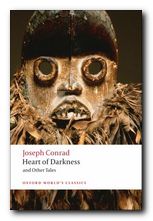 Heart of Darkness (1902) is a tightly controlled novella which has assumed classic status as an account of the process of Imperialism. It documents the search for a mysterious Kurtz, who has ‘gone too far’ in his exploitation of Africans in the ivory trade. The reader is plunged deeper and deeper into the ‘horrors’ of what happened when Europeans invaded the continent. This might well go down in literary history as Conrad’s finest and most insightful achievement, and it is based on his own experiences as a sea captain. This volume also contains ‘An Outpost of Progress’ – the magnificent study in shabby cowardice which prefigures ‘Heart of Darkness’.
Heart of Darkness (1902) is a tightly controlled novella which has assumed classic status as an account of the process of Imperialism. It documents the search for a mysterious Kurtz, who has ‘gone too far’ in his exploitation of Africans in the ivory trade. The reader is plunged deeper and deeper into the ‘horrors’ of what happened when Europeans invaded the continent. This might well go down in literary history as Conrad’s finest and most insightful achievement, and it is based on his own experiences as a sea captain. This volume also contains ‘An Outpost of Progress’ – the magnificent study in shabby cowardice which prefigures ‘Heart of Darkness’.
![]() Buy the book from Amazon UK
Buy the book from Amazon UK
![]() Buy the book from Amazon US
Buy the book from Amazon US
© Roy Johnson 2013
Joseph Conrad web links
Joseph Conrad at Mantex
Biography, tutorials, book reviews, study guides, videos, web links.
Joseph Conrad – his greatest novels and novellas
Brief notes introducing his major works in recommended editions.
Joseph Conrad at Project Gutenberg
A major collection of free eTexts in a variety of formats.
Joseph Conrad at Wikipedia
Biography, major works, literary career, style, politics, and further reading.
Joseph Conrad at the Internet Movie Database
Adaptations for the cinema and television – in various languages. Full details of directors and actors, production notes, box office, trivia, and quizzes.
Works by Joseph Conrad
Large online database of free HTML texts, digital scans, and eText versions of novels, stories, and occasional writings.
The Joseph Conrad Society (UK)
Conradian journal, reviews. and scholarly resources.
The Joseph Conrad Society of America
American-based – recent publications, journal, awards, conferences.
Hyper-Concordance of Conrad’s works
Locate a word or phrase – in the context of the novel or story.
More on Joseph Conrad
Twentieth century literature
Joseph Conrad complete tales
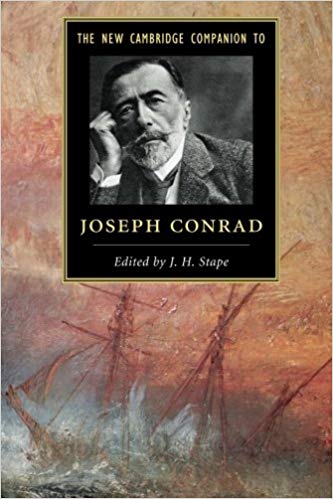
The Duel is an allegory about the Napoleonic Wars themselves. Ferand represents revolutionary France while d’Hubert is reactionary Europe. It follows the literary convention of conflict between order and chaos, Apollonian and Dionysian impulse, rationalism and passion. Both men survive, and there is no guarantee that d’Hubert’s triumph is permanent.
That is an interesting suggestion John. You may well be right, but I think the story is still damaged by being over-long and having the unrealistic ending.